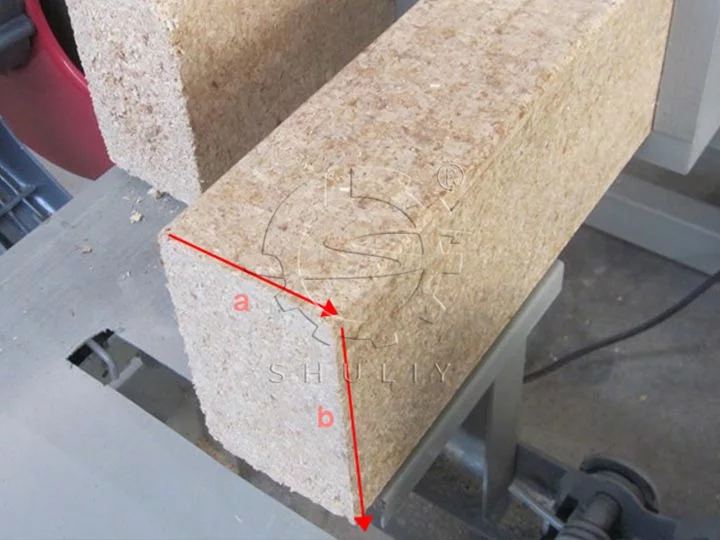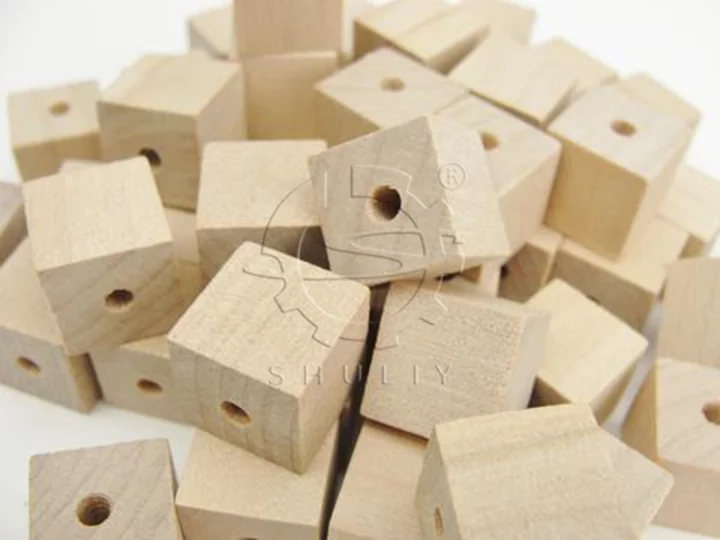No âmbito da produção de blocos de palete, uma consideração chave gira em torno de incorporar furos ou manter uma estrutura não porosa. Esta decisão é fundamental, pois influencia diretamente fatores como permeabilidade ao ar, resistência à umidade e facilidade de pregação.
Neste artigo, exploraremos as diferenças entre blocos de paletes com furos e blocos de paletes sem furos, esclarecendo as vantagens e considerações associadas a cada variante.

Blocos de paletes com furos:
Vantagens:
- Permeabilidade ao ar: O furo longitudinal central nos blocos de paletes permite a descarga de metanol e vapor de água. Esta característica aumenta a permeabilidade ao ar dos cubos de madeira, evitando que se expandam devido à humidade e, consequentemente, prolongando a sua vida útil.
- Resistência à umidade: A capacidade dos blocos de paletes com furos de liberar umidade através do furo central os torna menos propensos à expansão induzida pela umidade, tornando-os adequados para aplicações em diversas condições ambientais.
Considerações:
- Desafios de Pregar: Embora o furo central ofereça vários benefícios, ele apresenta desafios durante o processo de pregagem. Deve-se ter cuidado para evitar cravar acidentalmente pregos no furo central, o que poderia comprometer a integridade estrutural do bloco do palete.
Blocos de paletes sem furos:

Vantagens:
- Pregar conveniente: Os blocos de paletes sem furos são completamente densos, sem furos centrais. Esta característica os torna mais convenientes para pregar, eliminando a necessidade de navegar por um vazio central durante o processo de montagem.
Considerações:
- Permeabilidade ao ar reduzida: A ausência de furos em blocos de paletes sem furos pode limitar a sua permeabilidade ao ar em comparação com os seus homólogos com furos. Este aspecto é crucial em aplicações onde a circulação de ar dentro da estrutura do palete é uma consideração significativa.
- Sensibilidade à umidade: Os blocos de paletes sem furos podem ser mais suscetíveis a problemas relacionados à umidade em comparação com aqueles com furos, pois a ausência de um furo central restringe a liberação de metanol e vapor de água.
Densidade determinada pelo usuário:
A escolha entre blocos de paletes com furos e blocos de paletes sem furos é determinada principalmente pelos requisitos de densidade do usuário final. Uma maior densidade de madeira normalmente corresponde a uma melhor capacidade de carga, tornando essencial alinhar a escolha da estrutura do bloco de paletes com as necessidades específicas da aplicação.

Conclusão:
Concluindo, a decisão de usar blocos de paletes com ou sem furos envolve uma consideração cuidadosa de fatores como permeabilidade ao ar, resistência à umidade e facilidade de pregar. A compreensão das vantagens e considerações distintas associadas a cada variante permite que os usuários façam escolhas informadas com base em seus requisitos específicos de densidade e necessidades de aplicação.
Em última análise, quer sejam perfurados por furos ou completamente densos, os blocos de paletes desempenham um papel crucial na indústria de logística e transporte, e o seu design deve estar alinhado com as exigências da aplicação pretendida.



